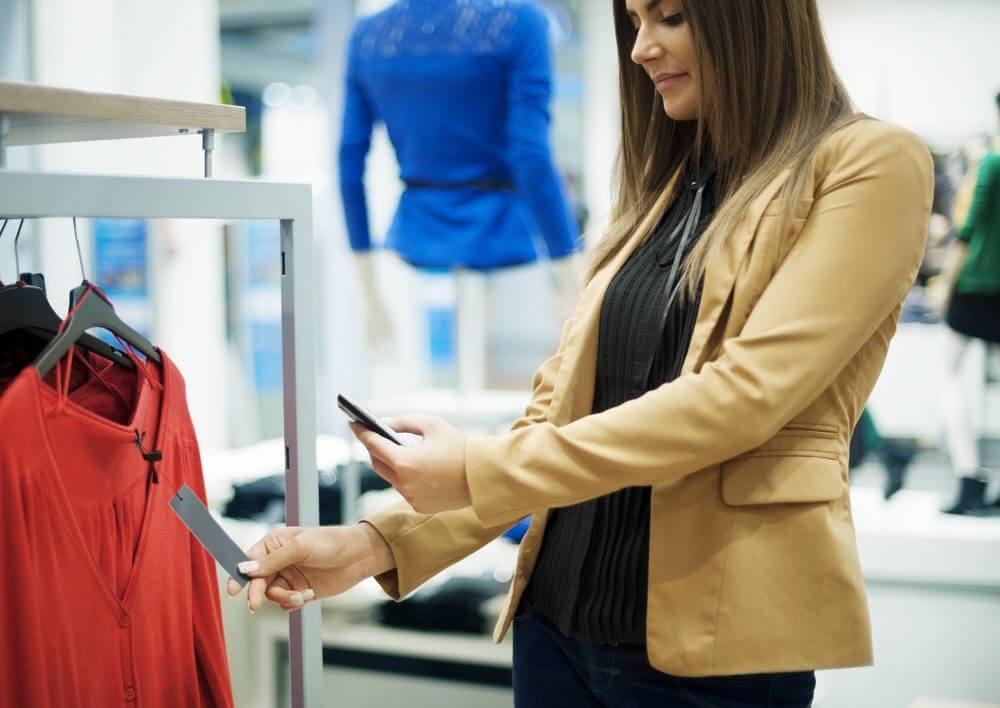I’m sorry, Strand Bookstore. Last week, I did something unforgivable.
I browsed the shelves of your Broadway storefront with the exclusive intent of thumbing through several titles I would later purchase on my Amazon app.
Did the $12 discount I secured in the process justify my moral failure? One may never know. But what is clear is the threat mobile devices pose to you and your brick-and-mortar brethren.
Smartphones and tablets are already the reason more retail shoppers are staying home, but even among customers who do leave their couch, at least 75% remain attached to their devices in-store.
If brick-and-mortar brands are lucky, smartphone-savvy visitors are referencing customer reviews en route to the checkout counter. If not, morally bankrupt individuals like myself those guests could just as easily be sizing up their next online order.
So what’s an offline business to do in an increasingly digital world? Well, one compelling answer could be retail beacons.
Retail Beacons Explained In 67 Words
Beacons are wireless transponders that facilitate communication between smart devices connected to a common Bluetooth low energy (BLE) network. When shoppers carrying a Bluetooth-enabled device walk within range of a store’s beacon network, both sides can benefit.
Beacons provide businesses with insights into device data and customer characteristics. In exchange, customers are provided with personalized marketing messages and sales offers that can significantly improve their in-store experience.
So what are the most likely ways for brick-and-mortar brands to profit off these instantaneous interactions?
Keep Casual Shoppers Curious
Today’s consumers have access to a greater volume and variety of product information than ever before, but that doesn’t necessarily mean they preside over each purchase like a Supreme Court justice. Ultimately, shoppers make 82% of their final buying decisions in-aisle.
Opportunistic merchants should see this as a clear sign that well-timed marketing messages have every chance at converting window shoppers into loyal customers. And with BLE networks reliable at a range of 50 meters, suddenly entire shopping complexes could be ripe for customer prospecting.
Beacons can boost foot traffic by broadcasting reminders about a time-sensitive sale. Mobile coupons can be the final push for a vacillating visitor. Neighboring merchants can even devise elaborate digital campaigns for cross-selling to each other’s customers.
Anticipate Questions & Deliver Answers
If those initial beacon tactics work well enough, stores could quickly see a spike in first-time visitors. And even if demographics don’t change, it’s still best to design in-store experiences with this segment of potentially underinformed and overwhelmed shoppers in mind. Brick-and-mortar stores need to feel inviting and intuitive to everyone if they’re going to compete with the convenience of eCommerce alternatives.
Luckily for retailers, properly programmed beacons can serve as some of their most knowledgeable sales associates. Department maps can solve in-store navigation issues. Video demos can communicate the simplicity of product assembly. Real customer reviews can seal a sale.
There’s little hope of stopping shoppers from consulting their smartphones in-store, so why not be the first source of information they see on the screen?
Personalize The Customer Experience
Who could possibly know a customer’s traits, problems, and preferences better than their friendly local shopkeeper? Amazon’s algorithms, for one.
Sadly it seems three out of four shoppers now believe eCommerce companies are better positioned to deliver personalized experiences. And if offline retailers have any hope of winning the personalization war, they’ll need to consider stealing some digital mojo from behind enemy lines.
Beacons could very well become the keystone of this strategy. By linking CRM databases, mobile shopping apps and various other customer intelligence assets to in-store hardware, brick-and-mortar retailers can access all the raw materials required for powerfully personalized communications.
Browsing shoppers can be prompted with personalized product recommendations, as opposed to generic geo-fenced promotions. Or customers can be reminded of an expiring loyalty program perk on a day they would have usually resisted an impulse purchase. In the end, the only real limiting factor for retail beacon strategies is context.
All kinds of creative new applications for the technology are sure to emerge over the next few years, but bombarding customers with intrusive or irrelevant messages could do more damage than radio silence. Retailers must tread carefully, but there will always be an audience for valuable information delivered to convenient platforms in context.
Analyze Behaviors & Apply Insights
Smart retailers listen more than they talk, and beacons are more than capable of including passive observation in their daily duties.
In-between broadcasting brand messages, beacons can also pinpoint trends in daily shopper traffic, popular product displays or commonly combined items. This behavioral intelligence can then fuel fresh, data-driven strategies that anticipate and address customer needs.
Recruiters can perfectly time hiring to coincide with seasonal spikes. Clerks can optimize the arrangement of in-store displays for maximum revenue. Inventory managers can move one step closer to supply chain automation.
This seamless loop of solutions probably sounds too good to be true, but the brave new world is closer than brick-and-mortar businesses may think.
I already enter most stores holding half of the equation in my right hand. If you push a compelling message onto that screen, odds are I’ll exit holding merchandise in the left.

